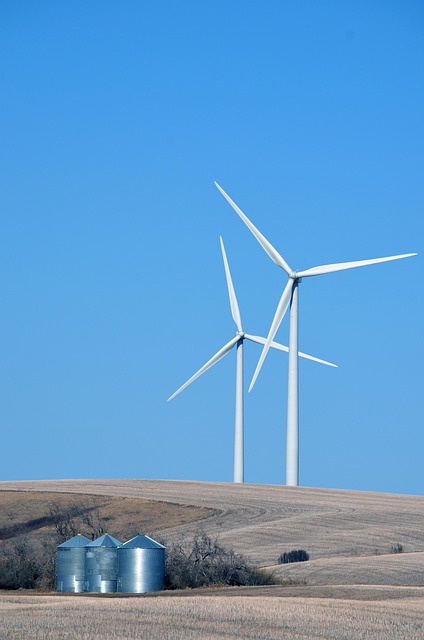Turning Wind into Wealth: The Economic Impact of Wind Turbines
In the quest for sustainable energy solutions, wind power has emerged as a frontrunner, transforming the way we think about energy production and its economic implications. Wind turbines, once viewed as simple mechanical devices, are now recognized as key players in the global economy. This article explores the multifaceted economic impact of wind turbines, investigating how they contribute to job creation, energy independence, and local and national economic growth.
The Growing Importance of Wind Energy
As concerns over climate change and fossil fuel dependency continue to rise, wind energy offers a viable alternative that aligns with sustainability goals. The wind energy sector has seen exponential growth over the last few decades, with a significant increase in the installation of wind turbines worldwide. In 2020, the Global Wind Energy Council reported that the global installed capacity reached 743 gigawatts (GW), a clear indication of the sector’s potential.
This growth is not just about green energy; it also signifies substantial economic opportunities. Wind energy is now contributing significantly to job creation, with thousands of jobs being generated in manufacturing, installation, maintenance, and support services.
Job Creation Across Sectors
The installation and maintenance of wind turbines create numerous jobs across various sectors. The wind industry demands a wide range of skills and specialties, leading to the development of a robust workforce. Here’s how these jobs are categorized:
Manufacturing: Wind turbines are complex machines composed of various components, including blades, gearboxes, generators, and control systems. Manufacturing these components requires skilled labor, ranging from engineers to assembly workers. With the rise of local turbine manufacturing facilities, numerous jobs have emerged, significantly boosting regional economies.
Installation: The construction phase of wind farms involves significant labor, with roles such as project managers, construction workers, and electricians all in high demand. The lifecycle of wind turbine installations creates temporary yet impactful employment opportunities in local communities.
Maintenance: Once operational, wind turbines require regular maintenance to ensure efficiency and safety. Technicians skilled in mechanical and electrical systems are essential for this ongoing process, contributing to a sustained job market long after the initial installation.
Support Services: Beyond the direct workforce, the wind industry fosters support services that cater to logistics, transportation, and consulting, amplifying job creation further.
Economic Growth and Local Investment
Wind farms not only generate electricity but also contribute significantly to local economies. Communities that host wind farms experience direct financial benefits from leasing land to wind developers, resulting in new income streams for farmers and landowners.
This local investment translates to improved infrastructure as wind developers often contribute to the improvement of roads and utilities that support the construction and operation of wind farms. Additionally, these facilities often generate a new property tax base for local governments, which can be used to support schools, roads, and emergency services.
Energy Independence and Security
One of the profound economic impacts of wind energy is its contribution to energy independence. By harnessing local wind resources, countries can reduce reliance on imported fossil fuels, leading to enhanced energy security and price stability. This shift toward renewable energy sources diminishes vulnerability to volatile global energy markets and geopolitical tensions.
Furthermore, the decentralization of energy production through wind farms allows for more stable local economies. Communities can produce their own energy, keeping financial resources within the region and minimizing exposure to external economic pressures.
Long-Term Economic Sustainability
Wind energy is known for its low operational costs after installation. While the initial capital investment can be significant, the running costs are typically low compared to fossil fuel power plants. This leads to cheaper electricity generation in the long run, contributing to overall economic sustainability.
Moreover, as technology progresses, the efficiency and capacity of wind turbines continue to improve. Innovations such as larger turbine designs and enhanced materials are paving the way for increased energy production at lower costs, further reinforcing the economic feasibility of wind energy.
Challenges Ahead
Despite its advantages, the wind energy sector faces challenges that could impede economic growth. Regulatory hurdles, public perception, and competition from traditional energy sources can affect the expansion of wind projects. Additionally, the intermittency of wind can present challenges for energy grid management, necessitating advancements in energy storage technologies.
Investing in research and development is critical to addressing these challenges and maximizing the economic benefits of wind energy. Governments, private sectors, and research institutions must collaborate to drive innovation and create a supportive regulatory framework.
The Future of Wind Turbines and Economic Impact
The future of wind energy looks promising, with forecasts suggesting significant growth in the coming years. As technology advances and public interest in sustainable practices increases, the economic impact of wind turbines is likely to expand even further.
Investment in offshore wind projects, for example, represents a new frontier for the industry. Offshore wind farms have the potential to generate more electricity due to stronger and more consistent winds. This could lead to increased energy output, job creation, and economic revitalization for coastal communities.
Furthermore, as nations commit to meeting net-zero emissions targets, the urgency to transition toward renewable energy sources like wind power will only grow. This transition will not only help combat climate change but will also trigger a significant economic transformation, providing opportunities for green jobs and sustainable growth.
Conclusion
Wind turbines represent a powerful solution for addressing both energy and economic challenges. Their ability to create jobs, generate local economic growth, and enhance energy independence makes them integral to modern economies. As the world continues to pursue sustainable energy paths, the wind energy sector will undoubtedly play a critical role in shaping a greener and more prosperous future.
The journey of turning wind into wealth is still underway, and with continued support and innovation, the economic impacts of wind turbines will continue to flourish, driving forward the agenda for sustainable development globally.
